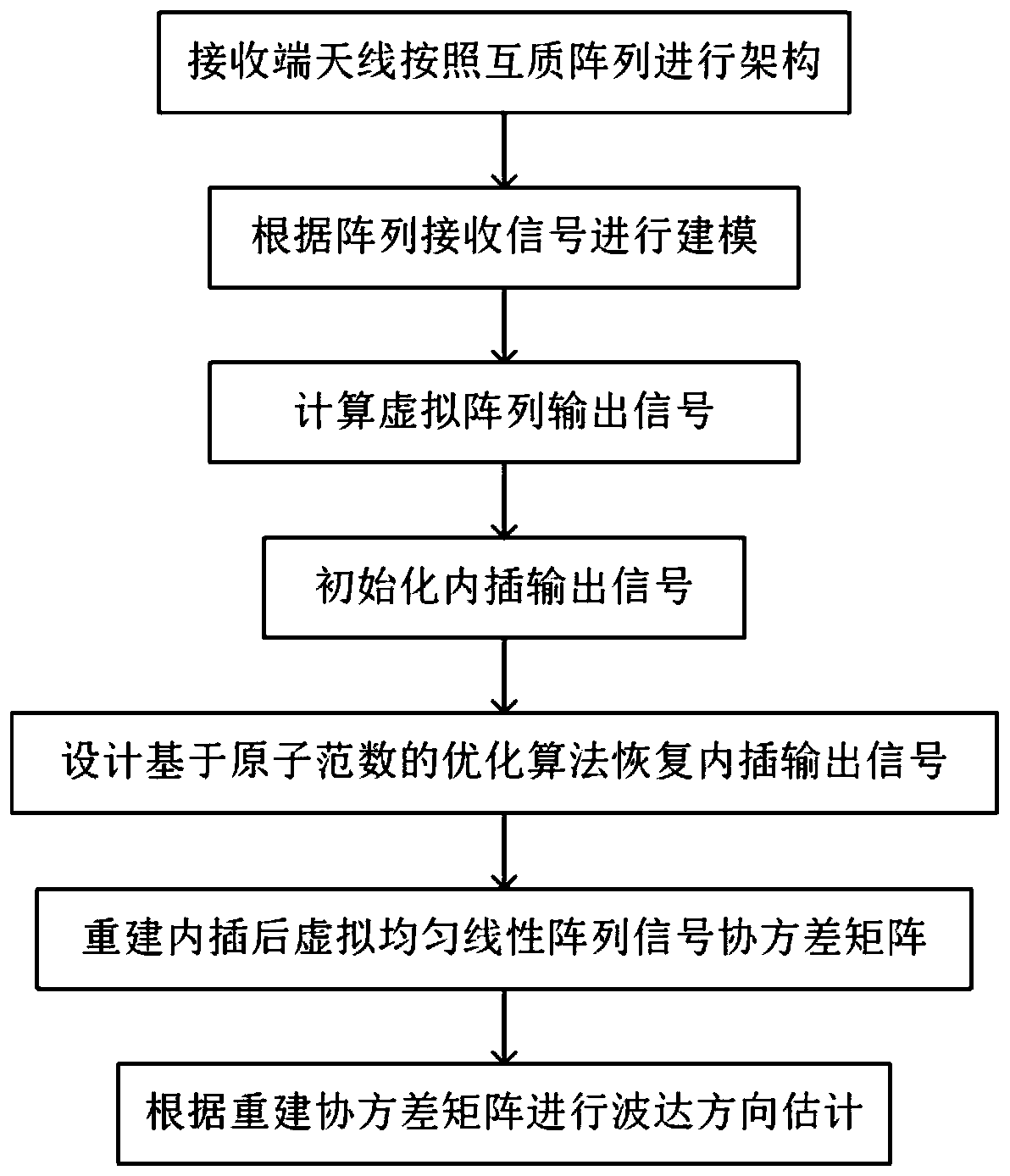Co-prime array underdetermined direction-finding method based on atomic norm
A norm, atomic technology, applied in the field of underdetermined direction finding of coprime arrays based on atomic norm, which can solve the problems of underutilization, increased computational complexity, and no noise processing.
- Summary
- Abstract
- Description
- Claims
- Application Information
AI Technical Summary
Problems solved by technology
Method used
Image
Examples
example 1
[0095] Simulation example 1: Select M=3, N=5, that is, use an extended coprime array containing N+2M-1=10 physical array elements to receive incident signals, and the array aperture is 25d; assume that there are 21 uncorrelated signal sources Evenly distributed in the angular range of [25.84°, 154.15°]. The signal-to-noise ratio is set to 20dB, the number of sampling snapshots is 500, and the regularization parameter is set to 1. The spatial power spectrum of the coprime array underdetermined direction finding method based on the atomic norm proposed by the present invention is as follows: Figure 4 As shown, the position of the vertical dotted line in the figure is the actual direction of the incident signal source. It can be seen that the method proposed in the present invention can effectively distinguish these 21 information sources. The traditional direction-of-arrival estimation method using a uniform linear array can only resolve 9 incident signals with 10 physical...
example 2
[0096] Simulation example 2: The extended coprime array is used to receive the incident signal, and its parameters are also selected as M=3, N=5, that is, the extended coprime array of the architecture contains N+2M-1=10 physical antenna elements; assuming 12 remote The incident direction of the field narrowband plane wave signal is evenly distributed between 25° and 155°, and a random distribution of -0.1°-0.1° offset is added to each incident direction to better show the performance of the algorithm. Algorithm proposed by the present invention and LASSO algorithm, SS-MUSIC algorithm, low-rank matrix denoising (LRD) algorithm, nuclear norm minimization (NNM) algorithm and some existing algorithms based on virtual array element interpolation (CA-VAI) Algorithms using coprime arrays are compared. The regularization parameters in LASSO algorithm, LRD algorithm, CA-VAI algorithm and the algorithm proposed by the present invention are 1.5, 10, 0.25 and 1 respectively, and the gr...
PUM
 Login to View More
Login to View More Abstract
Description
Claims
Application Information
 Login to View More
Login to View More - R&D
- Intellectual Property
- Life Sciences
- Materials
- Tech Scout
- Unparalleled Data Quality
- Higher Quality Content
- 60% Fewer Hallucinations
Browse by: Latest US Patents, China's latest patents, Technical Efficacy Thesaurus, Application Domain, Technology Topic, Popular Technical Reports.
© 2025 PatSnap. All rights reserved.Legal|Privacy policy|Modern Slavery Act Transparency Statement|Sitemap|About US| Contact US: help@patsnap.com



